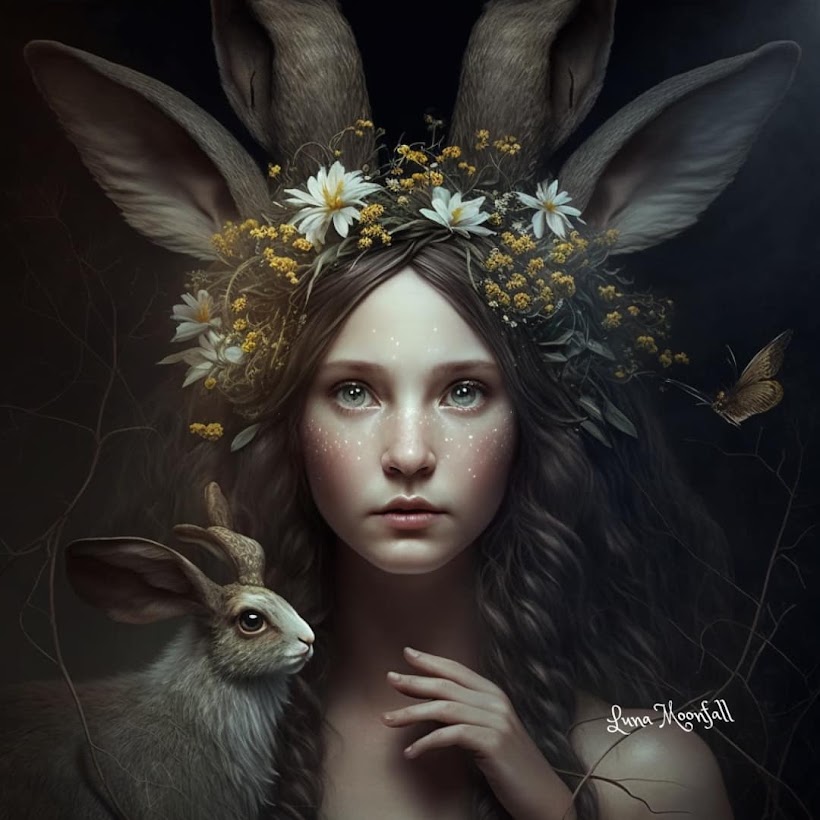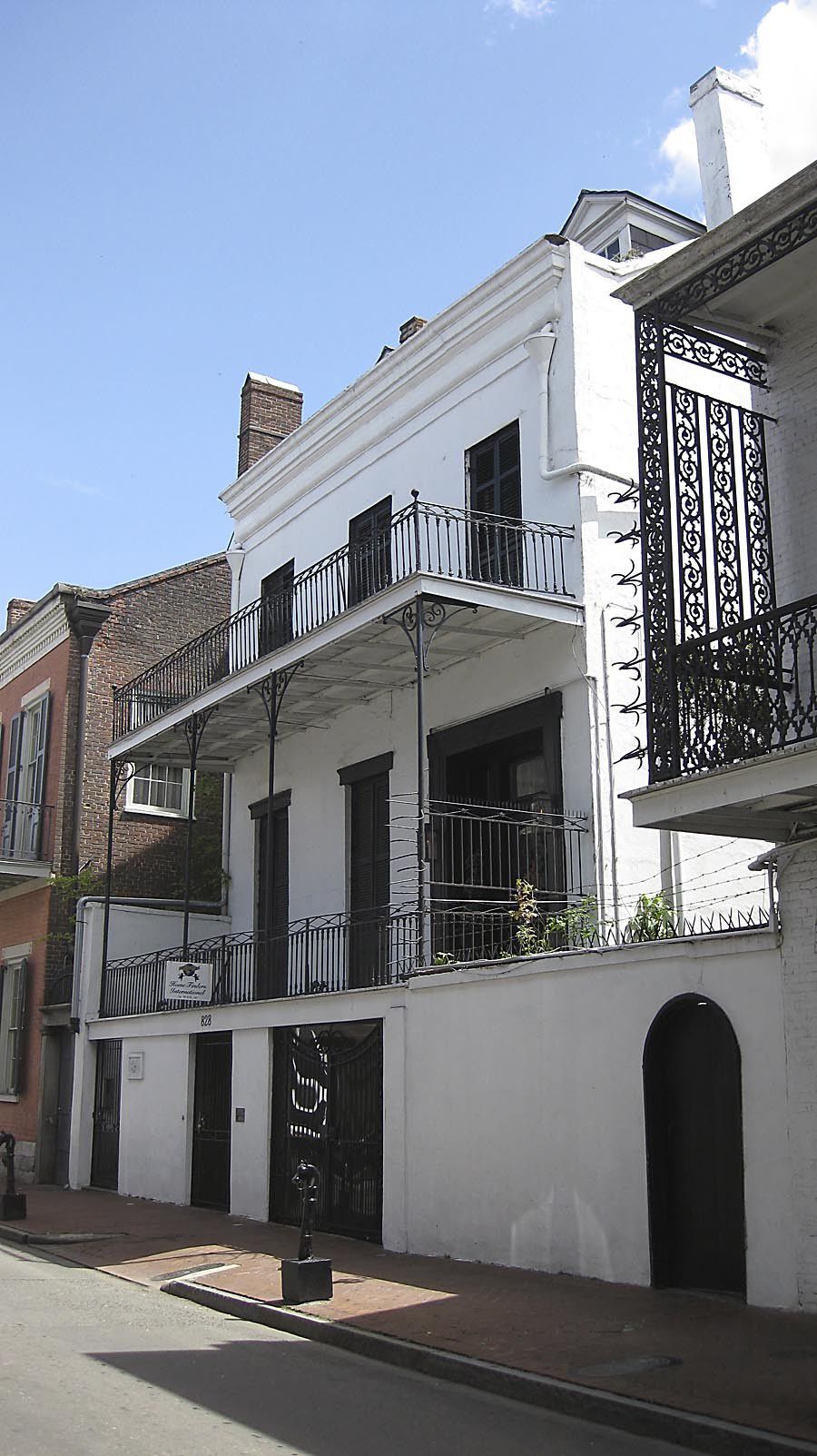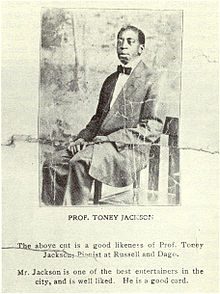
Hello. I'm writer Antoinette Beard/Sorelle Sucere. Welcome to my blog, which is dedicated to all the loving, intelligent, brave, wise, strong, gentle, kind, sweet-and-geeky, humble-and-patient, --- whether they have hands, paws, hooves, wings, fins, or even, --- yes, flippers, --- and to all eager readers and hard-working authors, everywhere.
Meanwhile...

I love all creatures. I consider them, all of them, to be sentient beings... I write thrillers, fantasy, mysteries, gothic horror, romantic adventure, occult, Noir, westerns and various types of short stories. I also re-tell traditional folk tales and make old fairy tales carefully cracked. I'm often awake very early in the morning. A cuppa, and fifteen minutes later I'm usually writing something. ;)
Tuesday, July 31, 2018
More Speculation: "Where Is The House Of The Rising Sun???, --- By Gambit"...

[Above, --- a house on St. Louis Street, New Orleans]
The song "House of the Rising Sun" has had many iterations. Some critics believe its meter and subject are rooted in a 16th-century British ballad. In 2007, Ted Anthony published Chasing the Rising Sun: The Journey of an American Song after more than a decade of research. The book follows the folk song's journey from its earliest recordings in 1933 by Clarence "Tom" Ashley to Georgia Turner to Woody Guthrie and Leadbelly in the 1940s, to Joan Baez and Bob Dylan in the '60s. The Animals recorded the most familiar version in 1964.
Today the song appears all over the world in many musical genres, including disco, country, jazz, reggae and hip-hop.
As the song traveled, it morphed to fit the region and gender of each singer and the mores of the time. Many believe the song is about a brothel, others a gambling hall and even a prison. According to Anthony, New Orleans could have appeared in the song because it was a big city full of temptations.
Some believe there was an actual House of the Rising Sun in New Orleans. The Hotel Villa Convento on Ursulines Street is rumored to be the legendary house. More common is the lore of a structure at 828 St. Louis St., which in the 1800s was said to be a bordello run by Madame Marianne Le Soleil Levant, whose surname is French for "rising sun." The current owner of that building, attorney Darlene Jacobs Levy, restored it to its original grandeur and hosted Animals singer Eric Burdon there. There was also a Rising Sun Hotel on Conti Street in the French Quarter. An ad in the Louisiana Gazette suggested that gentlemen would find "attentive servants" there. During a 2006 excavation of the site, archeologists found items suggestive of a bordello, and thus the mystique of the song lives on.
Monday, July 30, 2018
Friday, July 27, 2018
Tuesday, July 24, 2018
Amazing Underwater Footage of Trained Mink Catching Trout...
This is fascinating... Joseph Carter is "The Mink Man"!!!
Saturday, July 21, 2018
Thursday, July 19, 2018
Monday, July 16, 2018
Friday, July 13, 2018
Ewoks Springing The Trap!!!... [I love Ewoks!!!]...
Someday I might make an Ewok costume... I don't think it would be too hard. I'd just need furry pants and a furry long sleeved shirt and a teddy bear ear head piece.
Thursday, July 12, 2018
Friday, July 6, 2018
The Fascinating Erest J. Bellocq, --- The Storyville Photographer...
Bellocq was born into a wealthy white French Creole family in the French Quarter of New Orleans. He became known locally as an amateur photographer before setting himself up as a professional, making his living mostly by taking photographic records of landmarks and of ships and machinery for local companies. However, he also took personal photographs of the hidden side of local life, notably the opium dens in Chinatown and the prostitutes of Storyville. These were only known to a small number of his acquaintances. In the latter part of his life, he lived alone and acquired a reputation for eccentricity and unfriendliness. According to acquaintances from that period, he showed little interest in anything other than photography. In his early days, he had been something of a dandy.

Photo of steamer launched in New Basin Canal for excursion to Lake Pontchartrain's north shore, August 19, 1908, photo by E. J. Bellocq
Bellocq died in 1949, and was buried in Saint Louis Cemetery #3 in New Orleans.
After his death, most of his negatives and prints were destroyed. However, the Storyville negatives were later found. After many years, they were purchased by a young photographer, Lee Friedlander. In 1970, a show of Friedlander's posthumous prints on gold tone printing out paper from Bellocq's 8" x 10" glass negatives were mounted by curator John Szarkowski at the Museum of Modern Art in Manhattan. A selection of the photographs were also published concurrently in the book, Storyville Portraits. These photographs were immediately acclaimed for their unique poignancy and beauty. A more extensive collection of Friedlander's prints, entitled Bellocq: Photographs from Storyville, was published with an introduction by Susan Sontag in 1996.
In recent times, a significant number of prints from Bellocq's own studio have come to light. They are typical professional photographs of the day, such as portraits, copy work for the Louisiana State Museum, and local views, yet few if any Storyville portraits printed by Bellocq's hand exist. A number of early posthumous prints from Bellocq's negatives by photographer Dan Leyrer have also surfaced.
.
All the photographs are portraits of women. Some are nude, some dressed, others posed as if acting a mysterious narrative. Many of the negatives were badly damaged, in part deliberately, which encouraged speculation. Many of the faces had been scraped out; whether this was done by Bellocq, his Jesuit priest brother who inherited them after E. J.'s death or someone else is unknown. Bellocq is the most likely candidate, since the damage was done while the emulsion was still wet. In a few photographs the women wore masks.
All the photographs are portraits of women. Some are nude, some dressed, others posed as if acting a mysterious narrative. Many of the negatives were badly damaged, in part deliberately, which encouraged speculation. Many of the faces had been scraped out; whether this was done by Bellocq, his Jesuit priest brother who inherited them after E. J.'s death or someone else is unknown. Bellocq is the most likely candidate, since the damage was done while the emulsion was still wet. In a few photographs the women wore masks.
Some prints made by Bellocq have since surfaced. These are far more conventional than the full-negative prints made by Friedlander.
The Storyville photographs not only serve as a record of the prostitutes, but also the interiors of the businesses that housed them.
The mystique about Bellocq has inspired several fictional versions of his life, notably Louis Malle's 1978 film Pretty Baby, in which Bellocq was played by Keith Carradine. He also appears in Michael Ondaatje's novel Coming Through Slaughter and is a protagonist in Peter Everett's novel Bellocq's Women. These works take many liberties with the facts of Bellocq's life. He is also a minor character in David Fulmer's novel Chasing the Devil's Tail.
The photographs have inspired imaginative literature about the women in them. There are several collections of poems, notably Brooke Bergan's Storyville: A Hidden Mirror and Natasha Trethewey's Bellocq's Ophelia.
The 1974 book Storyville, New Orleans: Being an Authentic, Illustrated Account of the Notorious Red-Light District by Al Rose gives an overview of the history of prostitution in New Orleans with many photographs by Bellocq.
In 1971, "Storyville Portraits" won a mention at the Rencontres d'Arles's Book Award, France
The 1983 novel Fat Tuesday by R. Wright Campbell features a thinly-veiled depiction of Bellocq, a photographer named B.E. Locque.
Bellocq appears as a fictional character in David Fulmer's Storyville novels Chasing the Devil's Tail and Rampart Street. He is also a character in Madam: A Novel of New Orleans by Cari Lynn and Kellie Martin.
Thursday, July 5, 2018
"Pocketful of Miracles," (1961) classic movies trailer...
The delightful, warm-hearted movie that won the Oscar for best song and got plenty of nominations, including Peter Falk for best supporting actor. I loved this.
Wednesday, July 4, 2018
Storyville, New Orleans, --- The Infamous Red Light District...

[Above is the "New Image Supermarket," in 2005, which was originally Frank Early's Saloon. It's the only building of Storyville that still stands. Such a shame that the wonderful historic buildings that were the huge and ornate Victorian brothels were destroyed to make room for the constructing of housing projects.]
[Above, --- Chartres Street.]
Storyville was the red-light district of New Orleans, Louisiana, from 1897 to 1917. It was established by municipal ordinance under the New Orleans City Council, to regulate prostitution and drugs. Sidney Story, a city alderman, wrote guidelines and legislation to control prostitution within the city. The ordinance designated a thirty-eight block area as the part of the city in which prostitution, although still nominally illegal, was tolerated or regulated. The area was originally referred to as "The District", but its nickname, "Storyville", soon caught on, much to the chagrin of Alderman Story. It was bound by the streets of North Robertson, Iberville, Basin, and St. Louis Streets. It was located by a train station, making it a popular destination for travelers throughout the city, and became a centralized attraction in the heart of New Orleans. Only a few of its remnants are now visible. The neighborhood lies in Faubourg Tremé and the majority of the land was repurposed for public housing.
Though developed under the proposed title The District, the nickname Storyville was in reference to City Councilman Sidney Story, who wrote the legislation and guidelines to be followed within the proposed neighborhood limits. The thirty-eight block area was bounded by Iberville, Basin, St. Louis, and N. Robertson streets. His vision came from port cities that legalized prostitution and was officially established on July 6, 1897. For decades most of this former district was occupied by the Iberville Housing Projects (mostly demolished more recently), two blocks inland from the French Quarter.
The District was set up to limit prostitution to one area of town where authorities could monitor and regulate the practice. In the late 1890s, the New Orleans city government studied the legalized red light districts of northern German and Dutch ports and set up Storyville based on such models. Between 1895 and 1915, "blue books" were published in Storyville. These books were guides to prostitution for visitors to the district's services; they included house descriptions, prices, particular services, and the "stock" each house offered. The Storyville blue-books were inscribed with the motto: "Order of the Garter: Honi Soit Qui Mal Y Pense(Shame on Him Who Thinks Evil of It)". It took some time for Storyville to gain recognition, but by 1900, it was on its way to becoming New Orleans's largest revenue center.
Establishments in Storyville ranged from cheap "cribs" to more expensive houses, up to a row of elegant mansions along Basin Street for well-heeled customers. New Orleans' cribs were 50-cent joints, whereas the more expensive establishments could cost up to $10. Black and white brothels coexisted in Storyville; but black men were barred from legally purchasing services in either black or white brothels. Following the establishment of these brothels, restaurants and saloons began to open in Storyville, bringing in additional tourists.
The District was adjacent to one of the main railway stations, where travelers arrived in the city. It became a noted attraction.
Jazz did not originate in Storyville, but it flourished there as in the rest of the city. Many out-of-town visitors first heard this style of music there before the music spread north.[ Some outsiders continue to associate Storyville with the origins of jazz. It was a tradition in the better Storyville establishments to hire a piano player and sometimes small bands. Famous musicians who got their start in Storyville include Buddy Bolden, Jelly Roll Morton, and Pops Foster.
At the start of World War I, Secretary of War Newton Baker did not want troops to have distractions while deploying.[3] The Navy had troops located in New Orleans and the city was pressed to close Storyville. Prostitution was made illegal in 1917 and Storyville was used for the purpose of entertainment. Most of its buildings were later destroyed, and in 1940 its location was used to create the Iberville housing projects.
The Blue Book
In the early 1900s, a Blue Book could be purchased for 25 cents. Blue Books were created for tourists and those unfamiliar with this area of New Orleans and contained, in alphabetical order, the names of all the prostitutes of Storyville. It also included, in a separate section, the addresses of these prostitutes and separated them based on race. Prostitutes were identified as white, black, or octoroon. Landladies would be identified in bold font and information about popular houses, including interior and exterior pictures, was included. They also included advertisements for national and local cigar makers, distillers, lawyers, restaurants, drugstores, and taxi companies. The fees for general or specific services at the listed brothels were not included.
Blue Books could be purchased throughout the district in various barbershops, saloons, and railroad stations. Primarily they were sold on the corner of Basin Street and Canal Street.
The first Blue Book of Storyville was made between 1895 and 1896, but it wasn't until 1909 that the first popular edition was published. Billy Struve was its main producer in New Orleans.[4] Struve, a manager of the saloon of Thomas Charles Anderson, the "Mayor of Storyville",[5] published the books on the second floor of Lulu White's saloon on the corner of Basin Street and Bienville. Approximately sixteen editions were published until 1915.
Mahogany Hall
Storyville contained a large variety of brothels and parlors to satisfy the diverse tastes of visitors to New Orleans. Mahogany Hall was the most lavish of them, operated by Lulu White, an important businesswoman in the district. Mahogany Hall was an octoroon hall, employing prostitutes of mixed races. It was located at 235 Basin Street.
Mahogany Hall employed roughly 40 prostitutes. Popular women of Mahogany Hall included Victoria Hall, Emma Sears, Clara Miller, Estelle Russell, Sadie Reed and Sadie Levy. Lulu White advertised these women as having beautiful figures and a gift from nature, and gained a reputation for having the best women around.
Mahogany Hall was originally called the Hall of Mirrors and was built of solid marble with a stained glass fan window over the entrance door. It had four floors, five different parlours, and fifteen bedrooms with attached bathrooms. The rooms were furnished with chandeliers, potted ferns, and elegant furniture. The house was steam-heated, and each bathroom was supplied with hot and cold water. The interiors of the rooms of Mahogany Hall filled the ads in Blue Books and other advertising pamphlets of the period.
The Hall was forced to close down in 1917 following the closure of Storyville. Originally built for $40,000, it did not sell until 1929, when it fetched just $11,000. The hall became a House for the Unemployed in the mid-1940s until 1949 when it was finally demolished. However, the significance of the Hall can be found in various museums and in the jazz tune “Mahogany Hall Stomp” by Spencer Williams.
Notable people associated with Storyville
Alderman Sidney Story
Notably the Father of Storyville, Alderman Sidney Story, an American politician, wrote the legislation to set up the District, basing his proposals around other port cities that limited prostitution. Storyville became the nation's only legal red-light district, due to Ordinance No. 13,032, which forbade any and all prostitution in New Orleans outside of a tightly defined district in 1897. The original ordinance, written by Story, read:
From the first of October, 1897 it shall be unlawful for any public prostitute or woman notoriously abandoned to lewdness to occupy, inhabit, live or sleep in any house, room or closet without the following limits: South Side of Customhouse [Iberville] from Basin to Robertson street, east side of Robertson street from Customhouse to Saint Louis street, from Robertson to Basin street.
Story's vision allowed authority to regulate prostitution without technically legalizing it.
Lulu White
Lulu White was one of the most famous madams in Storyville, running and maintaining Mahogany Hall. She employed 40 prostitutes and sustained a four-story building that housed 15 bedrooms and five parlors. She often found herself in trouble with the law for serving liquor without a license and was known to get violent when another intervened in her practice.[3] Her clients were the most prominent and wealthiest men in Louisiana and she is remembered for her glamour and jewels "which were like the 'lights of the St. Louis Exposition' just as reported in her promotional booklet".
Prior to leaving New Orleans, White lost $150,000 in her investment schemes following the closure of Storyville.
Possible Locations For The Real House Of The Rising Sun...
Various places in New Orleans have been proposed as the inspiration for the song, with varying plausibility. The phrase "House of the Rising Sun" is often understood as a euphemism for a brothel, but it is not known whether or not the house described in the lyrics was an actual or a fictitious place. One theory is that the song is about a woman who killed her father, an alcoholic gambler who had beaten his wife. Therefore, the House of the Rising Sun may be a jailhouse, from which one would be the first person to see the sun rise (an idea supported by the lyric mentioning "a ball and chain," though that phrase has been slang for marital relationships for at least as long as the song has been in print). Because women often sang the song, another theory is that the House of the Rising Sun was where prostitutes were detained while treated for syphilis. Since cures with mercury were ineffective, going back was very unlikely.
Only three candidates that use the name Rising Sun have historical evidence—from old city directories and newspapers. The first was a small, short-lived hotel on Conti Street in the French Quarter in the 1820s. It burned down in 1822. An excavation and document search in early 2005 found evidence that supported this claim, including an advertisement with language that may have euphemistically indicated prostitution. Archaeologists found an unusually large number of pots of rouge and cosmetics at the site.
The second possibility was a "Rising Sun Hall" listed in late 19th-century city directories on what is now Cherokee Street, at the riverfront in the uptown Carrollton neighborhood, which seems to have been a building owned and used for meetings of a Social Aid and Pleasure Club, commonly rented out for dances and functions. It also is no longer extant. Definite links to gambling or prostitution (if any) are undocumented for either of these buildings.
A third was "The Rising Sun", which advertised in several local newspapers in the 1860s, located on what is now the lake side of the 100 block of Decatur Street. In various advertisements it is described as a "Restaurant," a "Lager Beer Salon," and a "Coffee House." At the time, New Orleans businesses listed as coffee houses often also sold alcoholic beverages.
Dave Van Ronk claimed in his biography "The Mayor of MacDougal Street" that at one time when he was in New Orleans someone approached him with a number of old photos of the city from the turn of the century. Among them "was a picture of a forbidding stone doorway with a carving on the lintel of a stylized rising sun... It was the Orleans Parish women's prison."
Bizarre New Orleans, a guidebook on New Orleans, asserts that the real house was at 1614 Esplandade Avenue, [shown below], between 1862 and 1874 and was said to have been named after its madam, Marianne LeSoleil Levant, whose surname means "The Rising Sun," in French. This house is still standing today and is now called "The NOLA Art House". It's been divided into separate apartments for artists and has two kitchens.
Another guidebook, Offbeat New Orleans, asserts that the real House of the Rising Sun was at 826–830 St. Louis St. between 1862 and 1874, also purportedly named for Marianne LeSoleil Levant. This building also still stands, and Eric Burdon, after visiting at the behest of the owner, said, "The house was talking to me."
There is a contemporary Bed & Breakfast called the House of the Rising Sun, decorated in brothel style. The owners are fans of the song, but there is no connection with the original place.
Not everyone believes that the house actually existed. Pamela D. Arceneaux, a research librarian at the Williams Research Center in New Orleans, is quoted as saying: "I have made a study of the history of prostitution in New Orleans and have often confronted the perennial question, "Where is the House of the Rising Sun?" without finding a satisfactory answer. Although it is generally assumed that the singer is referring to a brothel, there is actually nothing in the lyrics that indicate that the "house" is a brothel. Many knowledgeable persons have conjectured that a better case can be made for either a gambling hall or a prison; however, to paraphrase Freud: sometimes lyrics are just lyrics."
Tuesday, July 3, 2018
Subscribe to:
Posts (Atom)





